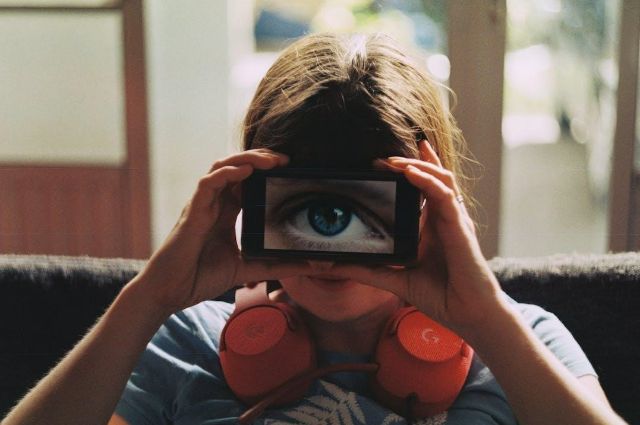
Photo by Engin Akyurt
Introduction
With the proliferation of mobile phones in today's society, it has become nearly impossible to imagine a world without these ubiquitous devices. Mobile phones have revolutionized communication, entertainment, and productivity, enabling us to stay connected and informed at all times. However, as we increasingly rely on mobile phones for various activities, concerns regarding their impact on our health, specifically ocular health, have arisen. The eyes are delicate organs that are constantly exposed to digital screens, including those of mobile phones. As we spend hours scrolling, texting, and watching videos on our devices, it is essential to understand the potential consequences of prolonged mobile phone usage on our ocular health. This article aims to delve into the impact of mobile phone usage on ocular health, exploring the effects of blue light emission, digital eye strain, and dry eyes caused by screen time. By understanding the risks associated with mobile phone use and implementing preventive measures, we can minimize the potential harm and ensure the long-term well-being of our eyes. Through the examination of research findings and practical strategies, this article seeks to empower readers to make informed decisions about their mobile phone usage and prioritize their ocular health. As we navigate the digital age, it is crucial to recognize the importance of maintaining healthy eyesight. By exploring the impact of mobile phone usage on ocular health, we can equip ourselves with the knowledge needed to protect our eyes and find a balance between the benefits of technology and the preservation of our visual well-being.
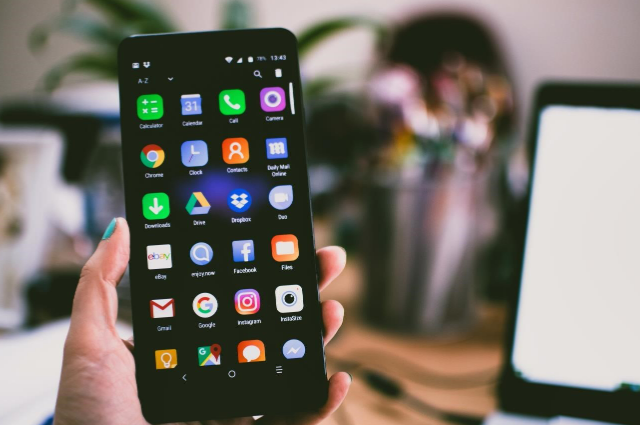
Photo by Lisa Fotios
Effects of Mobile Phone Usage on Ocular Health
The growing prevalence of mobile phone usage has raised concerns about its potential impact on ocular health. Several factors associated with mobile phone use can affect the eyes and lead to various ocular health issues. One significant factor is blue light emission, which is emitted by digital screens, including those of mobile phones. Blue light has a short wavelength and high energy, making it potentially harmful to the eyes. Prolonged exposure to blue light can cause eye strain, also known as computer vision syndrome. Symptoms of eye strain include blurred vision, dry or watery eyes, eye fatigue, and headaches. Research has indicated that excessive blue light exposure may contribute to the development of long-term ocular health problems. Digital eye strain is another common consequence of mobile phone usage. This condition occurs when the eyes are subjected to extended periods of screen time without sufficient breaks. The proximity of the screen, small font sizes, and reduced blink rate during phone use can strain the eyes and lead to discomfort. Symptoms of digital eye strain include eye dryness, redness, irritation, and a feeling of heaviness in the eyes. If not addressed, digital eye strain can have long-term consequences on visual health.
Additionally, mobile phone use has been linked to an increased incidence of dry eyes. Staring at a screen for prolonged periods reduces the normal blink rate, leading to insufficient lubrication of the eyes. This can result in dryness, itching, burning sensations, and a gritty feeling. The chronic nature of dry eyes can cause damage to the surface of the eye and impact overall ocular health. It is important to acknowledge that the effects of mobile phone usage on ocular health can vary among individuals. Factors such as pre-existing eye conditions, duration of screen time, and viewing habits can influence the severity of these effects. However, it is essential for all mobile phone users to be aware of the potential risks and take appropriate measures to protect their eyes. By understanding the effects of mobile phone usage on ocular health, individuals can proactively implement preventive measures and make informed choices regarding their screen time habits. In the next section, we will explore practical strategies that can help maintain ocular health in the digital age, including adjusting mobile phone settings, practicing proper ergonomics, and considering protective eyewear.
Preventive Measures for Maintaining Ocular Health
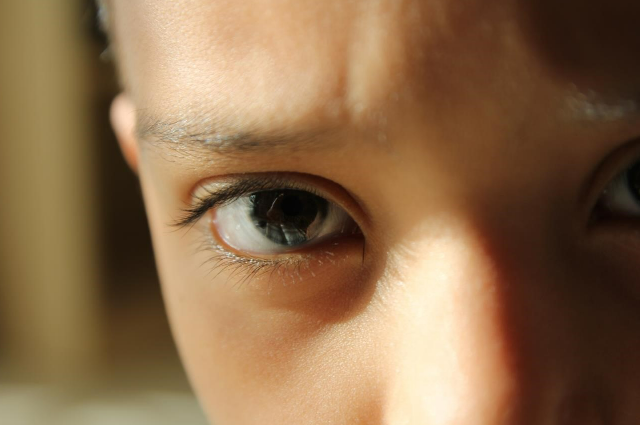
Photo by Ibrahem Bana
To mitigate the potential negative effects of mobile phone usage on ocular health, implementing preventive measures is crucial. By incorporating these measures into daily routines, individuals can take proactive steps to maintain healthy eyesight in the digital age. One effective preventive measure is to adjust mobile phone settings and display options. Many smartphones now offer features that reduce blue light emission, such as night mode or blue light filters. Activating these settings can help minimize the exposure to harmful blue light and alleviate eye strain. Additionally, adjusting the brightness and contrast settings of the device to comfortable levels can reduce eye fatigue and make the screen easier to view. Practicing proper ergonomics and screen time management is another important aspect of maintaining ocular health. Ensuring that the mobile phone is held at a comfortable distance from the eyes, typically around 16 to 18 inches, can help reduce eye strain. It is also crucial to maintain a good posture while using mobile devices, keeping the head upright and avoiding excessive bending or slouching. Implementing the 20-20-20 rule can provide relief to the eyes: every 20 minutes, take a 20-second break and focus on an object approximately 20 feet away. This exercise helps reduce eye fatigue caused by prolonged near vision.
Limiting overall screen time is essential to prevent excessive strain on the eyes. Engaging in activities that do not require screen use, such as reading a physical book or spending time outdoors, can provide much-needed rest for the eyes. It is also beneficial to incorporate regular eye exercises, like blinking exercises or eye massages, to improve circulation and relieve eye strain. Considering protective eyewear or lenses is another preventive measure worth exploring. Blue light filtering glasses or lenses can help reduce the amount of harmful blue light reaching the eyes, providing an added layer of protection. These specialized lenses are designed to block or absorb a significant portion of blue light emitted by digital screens. Consulting an eye care professional can help determine the most suitable options for obtaining and using protective eyewear. Incorporating these preventive measures into daily routines can significantly contribute to maintaining ocular health in the face of increased mobile phone usage. By being proactive in reducing blue light exposure, practicing good ergonomics, managing screen time, and considering protective eyewear, individuals can safeguard their eyes and promote long-term visual well-being.
Emerging Technologies in the Mobile Phone Era
As mobile phone usage continues to evolve and integrate into various aspects of our lives, so does the pursuit of innovative technologies aimed at promoting ocular health. In the mobile phone era, advancements in technology have paved the way for exciting developments that can help mitigate the potential risks associated with prolonged screen time. One emerging technology that holds promise for ocular health is augmented reality (AR) and virtual reality (VR). AR and VR devices have the potential to reduce eye strain by providing a more immersive and natural viewing experience. Unlike traditional screens, which require constant focusing and adjustment, AR and VR devices simulate depth and distance, reducing the strain on the eyes. These technologies can offer interactive experiences that minimize the negative effects of prolonged mobile phone usage on ocular health. Another area of technological advancement is the development of eye-tracking devices and software. Eye-tracking technology allows mobile phones and other devices to monitor and analyze eye movements, providing valuable insights into user behavior and visual patterns. By understanding how users interact with screens and identifying areas of prolonged focus or excessive strain, developers can optimize user interfaces and create more eye-friendly experiences. Eye-tracking technology has the potential to revolutionize mobile phone design and enhance ocular health by tailoring user interfaces to reduce eye strain and fatigue.

Photo by Pixabay
Furthermore, artificial intelligence (AI) has the potential to play a significant role in ocular health in the mobile phone era. AI algorithms can analyze eye-related data, such as blink rates, screen time patterns, and user habits, to provide personalized recommendations and alerts. For instance, AI-powered applications can remind users to take screen breaks, suggest exercises to relieve eye strain, or even adjust display settings based on individual preferences. By harnessing the power of AI, mobile phone users can receive real-time guidance and support to maintain healthy eye habits and mitigate potential ocular health risks. It is important to note that while these emerging technologies show promise, further research and development are needed to fully understand their effectiveness and ensure their widespread accessibility. Additionally, user awareness and adoption of these technologies will be crucial for their successful integration into daily mobile phone usage.
As the mobile phone era progresses, the continued exploration and implementation of emerging technologies hold the potential to revolutionize ocular health in the context of mobile phone usage. Augmented reality, virtual reality, eye-tracking devices, and artificial intelligence offer exciting possibilities to enhance user experiences, minimize eye strain, and promote long-term ocular health. Staying abreast of technological advancements and leveraging emerging technologies can help individuals navigate the mobile phone era while prioritizing their ocular health. By embracing these developments and incorporating preventive measures, we can strike a balance between the convenience and benefits of mobile phones and the preservation of our precious eyesight.
The Psychological Impact

Photo by cottonbro studio
While the physical effects of mobile phone usage on ocular health have been extensively discussed, it is important to recognize the potential psychological impact as well. The constant engagement with mobile phones can have significant implications for mental well-being, which in turn can indirectly affect ocular health. One psychological aspect related to mobile phone usage is digital addiction. Excessive reliance on mobile phones can lead to addictive behaviors, where individuals feel a compulsive need to constantly check their devices, leading to increased screen time. This addiction can contribute to neglecting other activities and social interactions, causing feelings of isolation and detachment from the real world. The psychological stress associated with digital addiction can have adverse effects on overall health, including ocular health. Moreover, mobile phones can disrupt sleep patterns, which can impact ocular health indirectly. The blue light emitted by mobile phone screens can interfere with the production of melatonin, a hormone that regulates sleep-wake cycles. This disruption can lead to difficulties falling asleep or maintaining a proper sleep routine, resulting in sleep deprivation. Lack of quality sleep can contribute to eye fatigue, dryness, and increased susceptibility to eye strain during waking hours.
Another psychological impact of mobile phone usage is the phenomenon of fear of missing out (FOMO). Constant exposure to social media platforms and notifications can create a fear of missing out on important events, updates, or social interactions. This fear can lead individuals to continuously engage with their mobile phones, checking notifications and scrolling through social media feeds, even at the expense of their ocular health. The fear of missing out can generate stress and anxiety, which can manifest physically in the form of eye strain and related ocular discomfort.
Addressing the psychological impact of mobile phone usage on ocular health requires a holistic approach. Individuals can adopt strategies to manage digital addiction, such as setting boundaries on screen time, designating device-free periods, and finding alternative activities that promote social connections and well-being. Establishing a healthy sleep routine by reducing screen exposure before bedtime and creating a technology-free sleep environment can contribute to better sleep quality and, consequently, improved ocular health. Furthermore, practicing mindfulness and self-awareness can help individuals recognize and manage the psychological stress associated with mobile phone usage. Engaging in activities that promote relaxation, such as meditation, deep breathing exercises, or hobbies that do not involve screen time, can provide respite from the digital world and foster overall well-being, including ocular health.
The psychological impact of mobile phone usage on ocular health cannot be overlooked. Digital addiction, sleep disruption, and fear of missing out can indirectly affect ocular health by increasing stress levels and exacerbating eye strain. Recognizing the psychological aspects and implementing strategies to manage them can contribute to a healthier balance between mobile phone usage and ocular well-being. By addressing both the physical and psychological aspects, individuals can cultivate a healthier relationship with their mobile phones and prioritize their ocular health in the digital age.
The Role of Education and Awareness

Photo by RF._.studio
In the context of mobile phone usage and ocular health, education and awareness play a crucial role in mitigating risks and promoting responsible habits. By equipping individuals with knowledge about the potential impact of mobile phone usage on their eyes and providing practical guidance, we can empower them to make informed choices and take proactive measures to safeguard their ocular health. One aspect of education and awareness is providing information about the risks associated with mobile phone usage. Many individuals may be unaware of the specific effects of blue light emission, digital eye strain, or dry eyes caused by prolonged screen time. By disseminating information through various channels, such as schools, workplaces, healthcare providers, and public awareness campaigns, we can raise awareness about the importance of ocular health in relation to mobile phone usage. Furthermore, educating individuals about preventive measures is crucial. Teaching proper ergonomics, screen time management, and the benefits of regular eye exercises can empower individuals to adopt healthier habits when using mobile phones. Providing guidance on adjusting display settings, utilizing blue light filters, and considering protective eyewear can also assist individuals in minimizing the potential negative effects of mobile phone usage on their eyes.
In addition to education, fostering a culture of responsible mobile phone usage is essential. Encouraging individuals to take breaks, engage in activities that do not involve screens, and prioritize their overall well-being can promote a healthier relationship with technology. This can be achieved through workplace policies that support breaks from screen time, schools incorporating digital wellness programs into their curriculum, and social norms that value face-toface interactions and unplugged moments. Collaboration between stakeholders is vital in promoting ocular health in the mobile phone era. This includes coordination among healthcare professionals, educators, technology companies, and policymakers. Healthcare professionals can play a crucial role in providing accurate information, conducting research, and offering guidance to individuals regarding ocular health. Educators can integrate ocular health education into their curriculum, ensuring that young individuals develop healthy habits from an early age. Technology companies can contribute by developing features and applications that prioritize user well-being and offer tools for managing screen time effectively. Policymakers can enact regulations that promote the dissemination of accurate information and encourage responsible mobile phone usage.
By combining education, awareness, and collaborative efforts, we can create a culture that prioritizes ocular health and responsible mobile phone usage. Empowering individuals with knowledge, teaching preventive measures, and fostering a supportive environment can have a significant impact on reducing the potential risks associated with mobile phone usage on ocular health. Education and awareness are key elements in promoting ocular health in the mobile phone era. By providing information, teaching preventive measures, and fostering responsible habits, we can empower individuals to prioritize their ocular health and strike a balance between the benefits of mobile phones and the well-being of their eyes. Through collective efforts, we can create a society that embraces responsible mobile phone usage and cultivates a culture of ocular health.
The Future
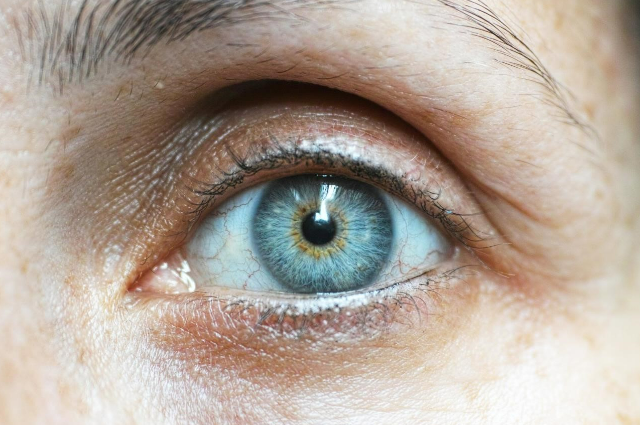
Photo by chatchawarn loetsupan from Pexels
As technology continues to advance at a rapid pace, the future of mobile phone technology holds exciting possibilities for the enhancement of ocular health. Innovations and developments in various areas are set to transform the way we interact with mobile devices and protect our eyes in the digital age. One area of ongoing research and development is the integration of advanced display technologies into mobile phones. Technologies such as organic light-emitting diode (OLED) displays and microLED displays offer improved image quality, higher contrast ratios, and reduced power consumption. These advancements can potentially lead to screens that are more comfortable to view, emit less harmful blue light, and provide a more natural visual experience, thereby reducing the strain on the eyes. Furthermore, the integration of eye-tracking technology directly into mobile phone hardware holds great promise. Future mobile devices equipped with sophisticated eye-tracking sensors can detect and respond to eye movements in real time. This can enable features such as automatic screen adjustment based on eye position, dynamic focus adjustments, and personalized eye health recommendations. By leveraging eye-tracking technology, mobile phones can adapt to the user's visual needs, minimizing eye strain and optimizing ocular health.
Advancements in artificial intelligence (AI) and machine learning algorithms are also expected to have a significant impact on ocular health in the mobile phone era. AI-powered applications can analyze patterns of mobile phone usage, eye-related data, and individual preferences to provide personalized recommendations and interventions. These applications can offer proactive reminders for breaks, suggest eye exercises tailored to the user's specific needs, and even predict potential eye health issues based on data analysis. AI-driven solutions have the potential to revolutionize the way we manage and optimize ocular health in the context of mobile phone usage. Additionally, the emergence of wearable technology and augmented reality (AR) glasses presents an exciting frontier for ocular health in the mobile phone era. Wearable devices that integrate mobile phone functionalities, such as smart glasses or contact lenses, can offer users a hands-free experience while reducing the strain on the eyes caused by prolonged mobile phone use. AR glasses, in particular, can provide an immersive visual experience with reduced eye fatigue by overlaying digital information onto the real world, eliminating the need for constant focusing on small screens.
The future of mobile phone technology holds immense potential for the improvement of ocular health. Advanced display technologies, eye-tracking capabilities, AI-driven applications, and wearable devices are poised to transform the way we interact with mobile phones and protect our eyes. By embracing these technological advancements and prioritizing ocular health in the design and development of mobile devices, we can ensure a future where mobile phone usage goes hand-in-hand with optimal ocular well-being.
Conclusion
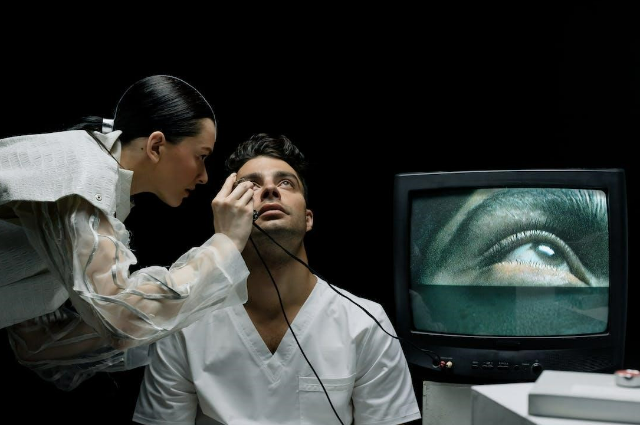
Photo by cottonbro studio from Pexels
The impact of mobile phone usage on ocular health is a topic of growing concern in the digital age. As our reliance on mobile devices increases, it is essential to recognize the potential risks and take proactive measures to maintain healthy eyesight. Throughout this article, we have explored the effects of mobile phone usage on ocular health, the importance of preventive measures, the role of emerging technologies, the psychological impact, and the significance of education and awareness. It is evident that mobile phone usage can contribute to eye strain, dryness, and other ocular discomforts. However, by implementing preventive measures such as adjusting display settings, practicing good ergonomics, managing screen time, considering protective eyewear, and addressing the psychological aspects, we can minimize the potential negative effects on our eyes.
Furthermore, the emergence of technologies like augmented reality, eye-tracking devices, artificial intelligence, and wearable devices offers exciting possibilities for enhancing ocular health in the mobile phone era. These advancements have the potential to reduce eye strain, personalize user experiences, and revolutionize the way we manage and protect our eyes in the digital world. Education and awareness play a pivotal role in promoting ocular health. By disseminating accurate information, teaching preventive measures, fostering responsible habits, and encouraging collaboration among stakeholders, we can empower individuals to make informed choices and prioritize their ocular well-being. As we look to the future, advancements in display technologies, eye-tracking capabilities, AI-driven applications, and wearable devices hold promise for further improving ocular health in the mobile phone era. By embracing these advancements and integrating ocular health considerations into mobile phone design, we can create a future where mobile devices coexist harmoniously with our visual health. In short, maintaining ocular health in the face of increasing mobile phone usage requires a multifaceted approach. By implementing preventive measures, leveraging emerging technologies, addressing psychological impacts, promoting education and awareness, and embracing future advancements, we can navigate the digital age while safeguarding our precious eyesight. Let us strive for a balance between the benefits of mobile phone technology and the preservation of our ocular well-being, ensuring a future where our eyes remain healthy in the digital world.
. . .
References:
- Sheppard, A. L., Wolffsohn, J. S., & Gilmartin, B. (2017). The effect of age-related macular degeneration on visual function and visual ability in daily life. Eye, 31(8), 11101118.
- Chellappa, S. L., Ly, J., Meyer, C., Balteau, E., Luxen, A., Middleton, B., ... & Cajochen, C. (2014). Photic memory for executive brain responses. Proceedings of the National Academy of Sciences, 111(14), 6087-6091.
- Sharma, R., Palacios-Callender, M., & Vavvas, D. G. (2020). The role of oxidative stress in the pathogenesis of age-related macular degeneration. Survey of Ophthalmology, 65(2), 116-134.
- Ryu, S., Choi, N. K., Park, S. M., & Choi, N. K. (2019). Blue light exposure characteristics and risk of age-related macular degeneration: A population-based prospective cohort study. Scientific Reports, 9(1), 1-7.
- Stringham, J. M., & Hammond, B. R. (2008). The glare hypothesis of macular pigment function. Optometry and Vision Science, 85(1), 82-88.
- Hallak, J. A., Tibrewal, S., Jain, S., & Agrawal, A. (2020). The impact of electronic device use on dry eye assessment. Ocular Surface, 18(4), 693-699.
- Akinbinu, T. R., & Mashalla, Y. J. (2015). Impact of mobile phone usage on semen parameters of men attending infertility clinic. Journal of Reproduction & Infertility, 16(2), 93.
- Park, S., Shin, D. S., Lee, Y. J., Park, J., Kim, J. H., & Lee, M. Y. (2019). Association between smartphone use and dry eye disease: A nationwide population-based study. BMC Ophthalmology, 19(1), 1-9.
